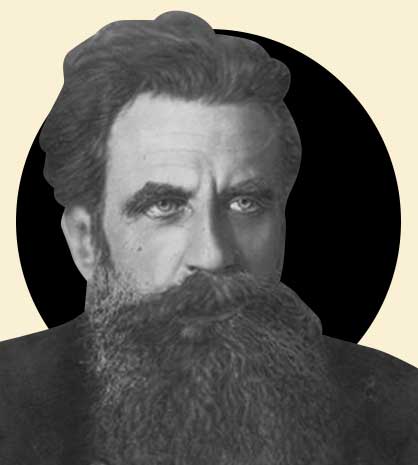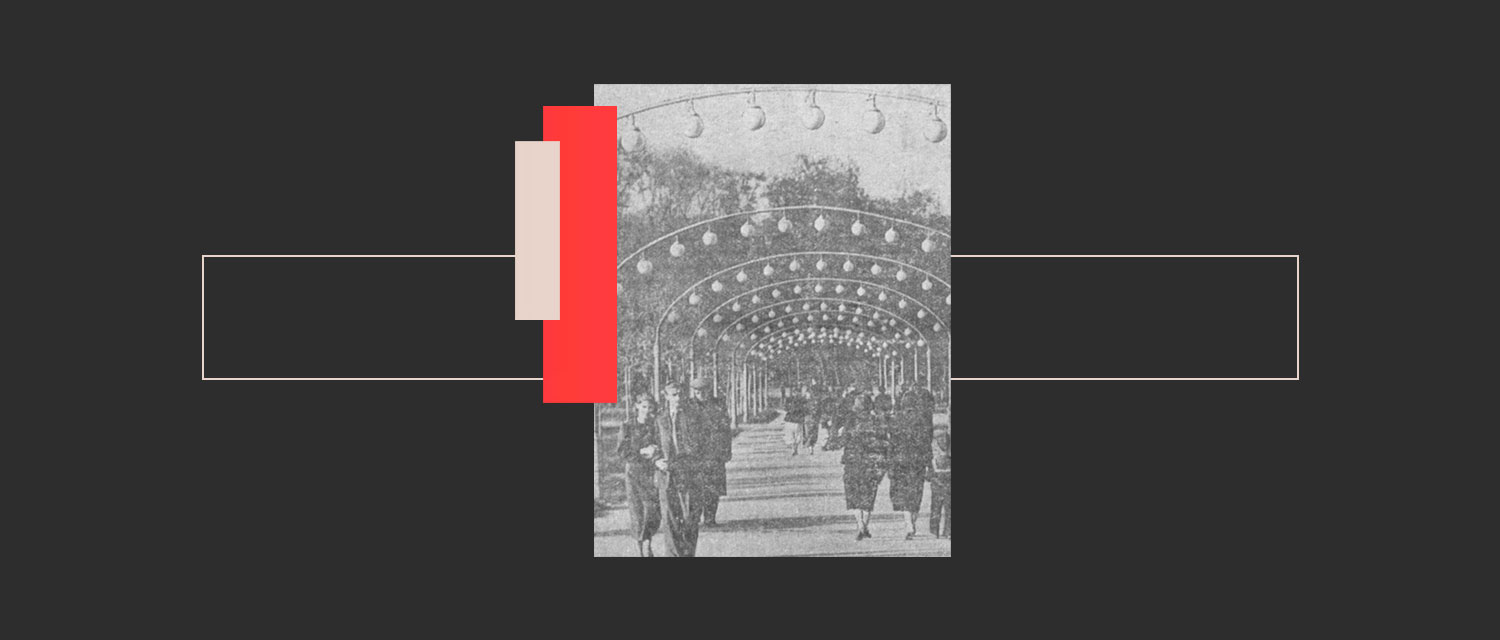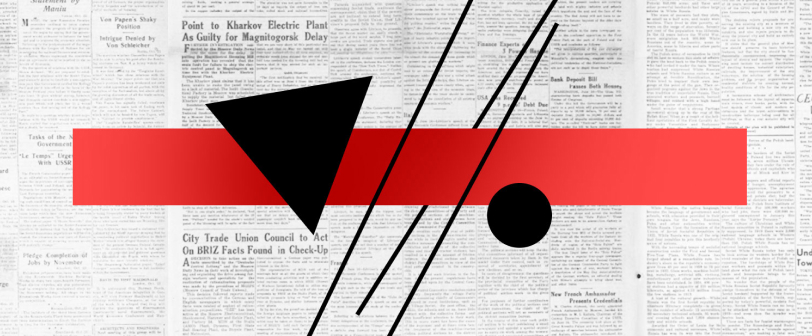Десять лет назад на отчетно-выборном собрании рабочий завода «Динамо» выступил с предложением к Моссовету о строительстве парка культуры и отдыха для жителей Москвы на заброшенном участке вдоль берега Москвы-реки. Указанная территория до революции использовалась для свалки отходов.
Тысячи московских рабочих поддержали это предложение не только словом, но и делом. Когда Моссовет начал воплощать в жизнь просьбу своих избирателей, тысячи рабочих в свое свободное время добровольно помогали строить и оборудовать парк. В 1928 году первый в Советском Союзе парк культуры и отдыха официально открылся.
За прошедшие десять лет Моссовет потратил более 30 миллионов рублей на улучшение и архитектурное украшение парка. Его территория выросла с 28 гектаров до 300 и протянулась на семь километров вдоль Москвы-реки. Фонтаны, балюстрады и скульптурные фигуры украшают его тропинки и дороги. Здесь было высажено более 40 000 деревьев и кустарников.
Часть социалистического города
Парк культуры и отдыха — новый тип парка, являющийся частью нового социалистического города. В нем доступны разные варианты времяпровождения и созданы все условия для отдыха трудящихся на свежем воздухе, для укрепления их физического и умственного здоровья. За десять лет с момента основания Центрального парка культуры и отдыха его посетили более 100 миллионов человек. Ежедневно его посещают 80 000 человек, а по выходным это число возрастает до 150 000 — 200 000.
В Парке культуры и отдыха есть все необходимое оборудование для занятий физкультурой, разнообразными видами спорта и играми. Более 20 миллионов человек принимали участие в проводившихся здесь спортивных соревнованиях, люди всех возрастов и профессий посещают спортивные школы парка. Около 170 000 человек научились здесь кататься на коньках и лыжах, и еще 150 000 — плаванию, нырянию и гребле.
Отдых организован таким образом, чтобы способствовать всестороннему физическому и культурному развитию населения. Известные ученые, писатели и общественные деятели проводят в парке вечера, посвященные памятным датам и важным литературным событиям. Здесь зачитывали доклады Л. Каганович, президент Академии наук Л. Комаров, герой Советского Союза О. , писатели А. Толстой и П. Павленко и многие другие.
Выдающиеся таланты
Посетители парка имеют возможность увидеть выдающиеся театральные и музыкальные таланты: лучшие театры Москвы, Ленинграда, Киева и других городов Советского Союза дают представления на пяти театральных площадках парка. На музыкальных сценах концертируют не только джазовые и фольклорные инструментальные ансамбли, но и симфонические оркестры, а известные актеры, композиторы и музыканты выступают перед тысячной аудиторией.
Широко известен Зеленый театр, построенный в 1933 году по инициативе Л. Кагановича, — одна из достопримечательностей парка. Вписанный в живописное естественное окружение, этот театр на открытом воздухе, рассчитанный на 20 000 человек, невероятно популярен у москвичей. За пять лет существования театр брался за решение многих художественных задач и ставил разнообразные эксперименты с целью поставить по-настоящему героический спектакль для масс. В этом жанре было поставлено несколько спектаклей в этом году. Особенно примечательным стал балет «Кавказский пленник» Большого театра. Посмотреть на выступления артистов балета пришли 200 000 человек.
Парк помог открыть немало талантов и сделал все для их развития. Многие известные сейчас советские артисты поначалу выступали на сценах парка. Некоторые боксеры получили первые уроки на его спортивных площадках. Один из них — чемпион СССР по боксу Николай Королев.
TEN YEARS ago, at an election meeting a worker of the Dynamo Plant moved that the Moscow Soviet be requested to lay out a park of culture and rest for the population of Moscow on a stretch of waste land lying along the banks of the Moscow River. The territory indicated had been used as city dumping grounds prior to the Revolution.
Thousands of Moscow workers supported the proposal not only by word but also by deed. When the Moscow Soviet began to put this instruction of its electors into effect, thousands of workers voluntarily assisted in their free time in laying out and equipping the park. In 1928 the first park of culture and rest in the Soviet Union was officially opened. More than 30 million rubles has been spent by the Moscow Soviet during the post 10 years for the improvement and architectural decoration of the grounds. From a territory of 28 hectares (a hectare equals 2.47 acres) it has grown to 300 hectares and stretches for seven kilometers along the Moscow River. Fountains, balustrades and sculptural figures line its piths and avenues. Forty thousand trees and shrubs have been planted there.
Part of Socialist City
The park of culture and rest is a new kind of park forming part of the new Socialist city. It offers the most diverse pastimes, and provides facilities for rest and recreation in the open air to working people; its purpose is to help the healthy dev elopment of both body and mind. Nearly 100 million people have visited the Central Park of Culture and Rest since its founding 10 years ago. About 80.000 persons visit it daily while on free days the figure rises to 150,000 to 200.000.
Facilities for physical culture, all forms of sport and various games are provided by this Center of rest and Over 20 million persons have participated in the sports competitions held there, while people of all ages professions attend its and sports schools. About 170.000 have learned to skate and ski there, and 150 000 to swim, row and drive.
Recreation has been so organized as to assist in all-round physical and cultural development of the population. Prominent scientists, authors and public men appear at the evenings marking significant dales and the important literary events held in the park. Reports have been delivered by L. M. Kaganovich. Peoples Commissar of Railways. L. Komarov, President of the Academy of Sciences, Hero of the Soviet Union O J. Schmidt, famous Arctic explorer, the writers A Tolstoi and P. Pavlenko and many others.
Outstanding Talent
The park brings outstanding theatrical and musical talent close to millions of its visitors. The best theaters of Moscow, Leningrad, Kiev and other cities of the Soviet Union give performances in the five theater buildings located on its grounds. Besides brass bands and folk instrument orchestras, symphony symphony orchestras perform on the band stands. while outstanding actors, composers and musicians appear before audiences of thousands.
The well-known Green Theater established in 1933 on the initiative of L. M Kaganovich is not the park’s features. Situated in a beautiful natural setting, this open-air theater seating 20,000 is extremely popular among Moscovites. During the live years it has been in existence, the theater has embarked on many artistic quests and made diverse scenic experiments, aspiring to create a truly mass heroic spectacle. Several productions staged this year marked beginning in this direction. Particularly noteworthy was the very successful production of the ballet «The Caucasian Prisoner» presented by the Bolshoi Theater. The 10 performances of this ballet were attended by 200.000 spectators.
Numerous drama and other amaleur art ensembles directed by prominent regisseurs and actors function, attracting many. One of these ensembles. consisting of youth who have studied several years in the dancing school ofthe park directed by ballet master A. Shatin was recently converted into a professional ballet troupe.
The park has disclosed many talented people and has done much to develop their abilities. Many who are now noted Soviet artists first sang, danced and played in the central park. Several well-known boxers received their first boxing lesson on the sport grounds there. Korolev, boxing champion of the USSR, is one of them. The park of culture and est is justly proud of these people whom it has assisted in discovering their particular bent.





